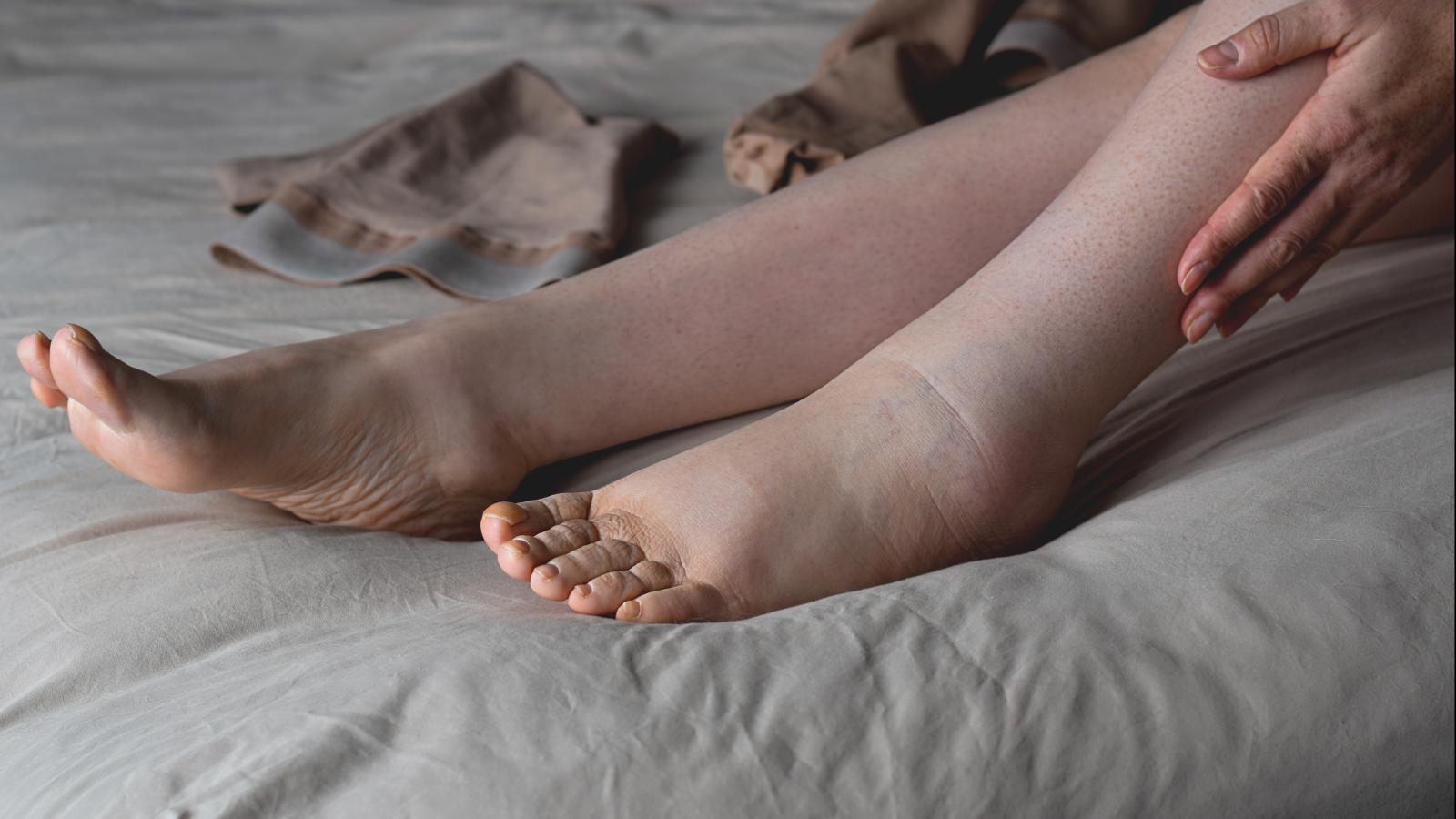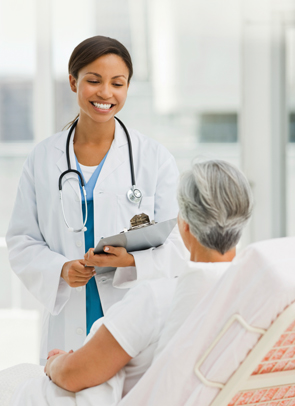Lymphoedema

What is lymphoedema and what causes it?
Lymphoedema is a swelling caused by a build-up of lymph fluid, when the lymphatic system isn’t working properly to remove the fluid. This can happen if lymph nodes are removed during surgery or after radiotherapy to treat cancer.
The most common places for lymphoedema to occur after cancer treatment are:
- In the arm and breast area after breast cancer treatment
- In the leg after cancer treatment to the groin area or the pelvis
- In the pelvic area and genitals after treatment for cancer of the prostate, bladder, womb, vagina, testicles, penis or rectum
- In the neck and face, if lymph nodes in the neck are affected, but this is rare
What are the common symptoms of lymphoedema?
- Swelling in your arm, hand, fingers or breast
- Swelling in your leg, foot, toes, lower tummy, buttocks or genital area
You may notice that swelling is less in the morning and gets worse later in the day. The swelling may be soft or hard depending on how long you have had it.
Other symptoms include:
- A tightness with some clothes, shoes, bracelets, watches, or rings
- A full, heavy, achy or weak feeling in your arm or leg
- A tight feeling in your skin. Skin may also be dry, flaky, rough or scaly
- Changes to your skin colour
- Trouble moving your arm or leg
How can I reduce my risk of lymphoedema?
It is really important that you look after the skin on the affected limb to reduce your risk of infection. Part of the lymphatic system runs just under the skin, so it is good to moisturise daily to prevent it becoming dry or broken, which can lead to infection.
Lymphoedema can develop months or even years after cancer treatment so it is important to be aware of the risks. Other ways to help prevent lymphoedema include:
Gently exercising
To reduce your risk of arm lymphoedema, try gentle repetitions of the following exercises:
- Slowly make boxing, rowing or breast-stroke kinds of movements.
- Slowly bend and straighten your elbow and wrist.
- Make a fist and then straighten your fingers
To reduce your risk of leg lymphoedema, try the following:
- Tighten your buttocks, hold for 5 seconds, then relax. Tighten your thigh muscles, hold for 5 seconds, then relax.
- Bend and straighten your knees, one at a time.
- Move your foot up and down at the ankle. Circle your foot to the left and the right.
Being physically active
Exercise is important, but it best to build up your level of activity gradually. In most cases you will be able to continue with the exercises and activities you enjoyed before your cancer treatment. Always do a ‘warm up’ and ‘cool down’ before and after exercise. Ask your physiotherapist for advice. It is important to:
- Use the at-risk limb in a normal way – using the muscles will help to improve lymphatic circulation.
- Avoid over-exertion of the at-risk arm – such as lifting or carrying heavy objects – if you are at risk of arm lymphoedema.
- Avoid standing in one position for long periods, if you are at risk of leg lymphoedema.
Keeping to a healthy weight
Excess weight can increase strain on the lymphatic system.
Taking care when travelling
- Stretch and move around as much as possible when travelling
- Avoid sunburn
- Prevent and avoid insect bites.
- Try to avoid accidental burns when cooking or ironing
- Seek medical help if you burn your skin, get sunburned or bitten by insects.
- Prevent dehydration by drinking water frequently.
Avoiding excessive heat
Extreme temperatures can cause swelling.
Prevent infection
- Try to avoid cuts, scratches, burns and insect bites and use antiseptic and antifungal creams when necessary.
- Avoid walking around barefoot as you may damage the skin on your foot.
- Wear gloves for gardening and housework.
- Contact your doctor immediately if you notice that your skin has become red, hot and tender, as you may have an infection called cellulitis. It is important to get this treated quickly with antibiotics.
How is lymphoedema treated?
Lymphoedema cannot be cured, but early treatment – when the swelling is soft and easily managed – is always recommended. Treatment aims to reduce the swelling and get the limb to function again.
Tell your GP or nurse specialist if you have any unexplained swelling. You may need to see a specialist lymphoedema therapist. If you have mild lymphoedema, the treatment may involve education, exercises and skin care advice.
If your lymphoedema is more severe, you may need more intensive treatment which involves:
- An intensive phase of sometimes daily therapy – involving massage, skin care and bandaging – with a lymphoedema therapist for up to 6 weeks.
- A maintenance phase where you will be able to continue your treatment at home.
How can I cope with lymphoedema?
With good care and education, lymphoedema can be kept under control. Some ways to help you cope with the condition include:
- Find out as much as possible about lymphoedema, from your doctor, specialist, or call our Support Line on 1800 200 700
- Try to be realistic in the goals you set for yourself.
- Don’t be afraid to ask for help.
- Talk to others who may be going through a similar experience



You can order printed booklets here: https://www.healthpromotion.ie/
For more information
Phone
1800 200 700


